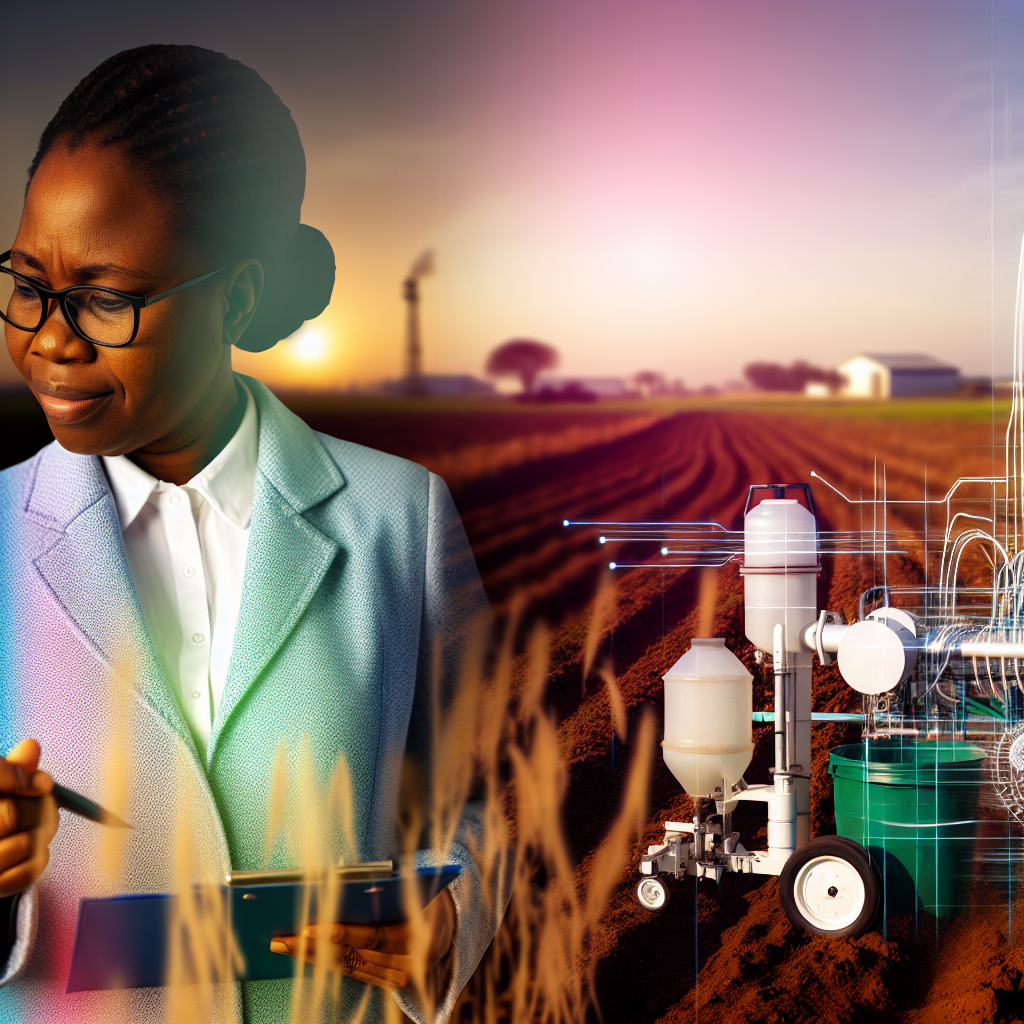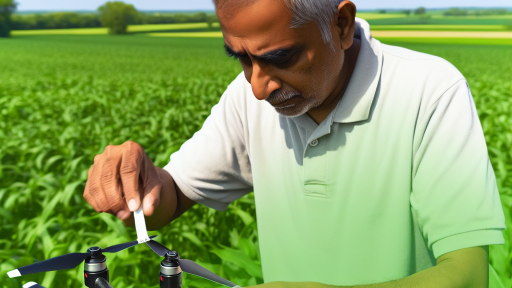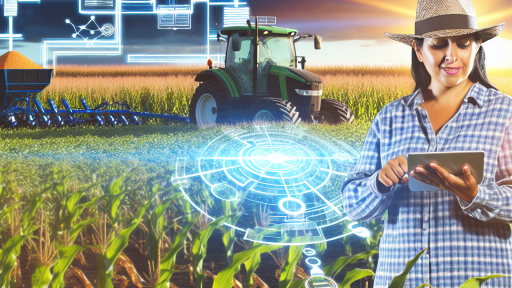Introduction to Climate-Smart Agriculture
Climate-smart agriculture (CSA) aims to transform agricultural practices.
It focuses on increasing productivity while ensuring sustainability.
This approach addresses the challenges posed by climate change.
Particularly, it reduces greenhouse gas emissions from farming.
CSA helps farmers adapt to unpredictable weather patterns.
Significance of Climate-Smart Agriculture
CSA plays a vital role in global food security.
By enhancing crop resilience, it ensures stable food supplies.
Moreover, sustainable practices promote soil health and biodiversity.
Farmers can improve their livelihoods through CSA adoption.
This approach minimizes resource depletion and environmental degradation.
Key Principles of Climate-Smart Agriculture
First, enhancing productivity sustainably is crucial.
Next, adapting to changing climate conditions is important.
Finally, mitigating greenhouse gas emissions supports climate goals.
Collectively, these principles promote environmentally friendly agriculture.
Applications and Tools
Innovative technologies assist in implementing CSA practices.
Transform Your Agribusiness
Unlock your farm's potential with expert advice tailored to your needs. Get actionable steps that drive real results.
Get StartedFor instance, precision agriculture optimizes resource use.
Integrated pest management reduces chemical dependency.
Cover cropping helps maintain soil structure and nutrients.
Farmers increasingly utilize these tools to boost resilience.
Overview of Environmental Challenges in Agriculture
Climate Change Impacts
Climate change poses significant threats to agriculture worldwide.
It alters weather patterns, causing unpredictable rainfall and temperature fluctuations.
Farmers struggle to adapt to extreme weather events, such as droughts and floods.
These challenges lead to reduced crop yields and food insecurity.
Moreover, changing climates increase pest populations and crop diseases.
Soil Degradation
Soil health is critical for sustainable agriculture.
However, intensive farming practices contribute to soil degradation.
This includes erosion, compaction, and nutrient depletion.
Healthy soil supports crop growth and water retention.
Moreover, degraded soil contributes to carbon dioxide emissions, exacerbating climate change.
Water Scarcity
Water scarcity is a growing concern in many agricultural regions.
Over-extraction of groundwater continues to decrease available water resources.
This trend leads to conflicts over water usage among farmers.
Additionally, inefficient irrigation practices waste precious water supplies.
Consequently, crops suffer from inadequate water availability.
Biodiversity Loss
Agricultural expansion threatens natural ecosystems.
Conversion of forests and wetlands reduces habitats for various species.
This results in a decline of plant and animal biodiversity.
Furthermore, monoculture practices weaken ecosystem resilience.
Maintaining biodiversity is essential for healthy ecosystems and food production.
Showcase Your Farming Business
Publish your professional farming services profile on our blog for a one-time fee of $200 and reach a dedicated audience of farmers and agribusiness owners.
Publish Your ProfilePesticide and Fertilizer Overuse
The use of pesticides and synthetic fertilizers has increased dramatically.
This practice can lead to soil and water contamination.
Excessive chemical inputs disrupt local ecosystems and kill beneficial organisms.
Moreover, they can cause health issues for farmworkers and local communities.
Shifting to sustainable alternatives is crucial for reducing these impacts.
Key Principles of Climate-Smart Agriculture
Enhancing Adaptive Capacity
Climate-smart agriculture enhances the adaptive capacity of farming systems.
This approach responds to changing climatic conditions.
Farmers can adjust practices based on local climate challenges.
Additionally, it strengthens resilience against extreme weather events.
Increasing Productivity
Increasing productivity forms a cornerstone of climate-smart agriculture.
Farmers adopt innovative techniques to cultivate crops efficiently.
This process maximizes yields while minimizing resource use.
Ultimately, it aims to secure food availability for growing populations.
Reducing Greenhouse Gas Emissions
Reducing greenhouse gas emissions is vital for sustainable farming.
This principle focuses on minimizing the carbon footprint of agriculture.
Practices include optimizing fertilizer use and enhancing soil health.
Moreover, it encourages the use of renewable energy sources.
Enhancing Food Security
Climate-smart agriculture promotes food security worldwide.
It addresses food shortages through improved agricultural practices.
The approach ensures consistent access to sufficient, safe food.
As a result, it strengthens community resilience against hunger.
Promoting Sustainable Resource Management
Sustainable resource management is essential in climate-smart agriculture.
This principle emphasizes efficient use of water and land resources.
It encourages crop rotation and agroforestry practices.
Furthermore, it advocates for biodiversity conservation.
Explore Further: Maximizing Yield With Advanced Agricultural Drones
Tools and Technologies in Climate-Smart Agriculture
Introduction to Climate-Smart Tools
Climate-smart agriculture (CSA) requires innovative tools and practices.
These tools help farmers adapt to changing climates.
Moreover, they play a crucial role in reducing environmental impact.
Precision Agriculture Technologies
Precision agriculture uses technology to optimize field-level management.
For instance, GPS technology enhances field mapping and crop monitoring.
As a result, farmers can precisely manage their inputs.
This method ultimately reduces waste and maximizes yields.
Soil and Crop Monitoring Sensors
Soil sensors measure moisture and nutrient levels.
This data helps farmers make informed irrigation decisions.
Similarly, crop monitoring sensors track growth and health conditions.
Consequently, farmers can detect issues early and apply targeted interventions.
Drones in Agriculture
Drones offer a bird’s-eye view of agricultural land.
They enable farmers to survey crops quickly and efficiently.
In addition, drones assist in monitoring crop health and soil condition.
Showcase Your Farming Business
Publish your professional farming services profile on our blog for a one-time fee of $200 and reach a dedicated audience of farmers and agribusiness owners.
Publish Your ProfileThis capability enhances timely and informed decision-making.
Agroecological Practices
Agroecological practices enhance biodiversity and soil health.
Crop rotation improves soil fertility and reduces pest damage.
Furthermore, intercropping diversifies production and strengthens resilience.
These methods contribute to sustainable agricultural systems.
Organic Fertilizers and Natural Pest Control
Organic fertilizers enrich soil without harmful chemicals.
Using compost boosts soil health while fostering beneficial organisms.
Natural pest control methods reduce reliance on chemical pesticides.
This approach promotes a healthier ecosystem.
Cover Cropping
Cover crops protect soil from erosion during off-seasons.
They also enhance soil organic matter and improve water retention.
By planting cover crops, farmers build resilience against extreme weather.
This practice ultimately leads to more sustainable farming operations.
Climate Information Systems
Access to reliable climate data is vital for farmers.
Climate information systems provide forecasts and alerts.
This information helps farmers plan their planting and harvesting schedules.
Furthermore, timely updates reduce crop losses from adverse weather events.
Mobile Applications for Farmers
Mobile applications disseminate crucial agricultural advice.
These apps provide weather forecasts, pest alerts, and market trends.
As a result, farmers can make better daily decisions.
Additionally, accessing information through smartphones enhances productivity.
Community-Based Weather Monitoring
Local networks can provide tailored weather information.
Community members share insights and experiences, creating a support system.
This practice fosters resilience among farmers facing climate challenges.
Ultimately, it enhances collective adaptability to climate variability.
Uncover the Details: Cost-Effective Drone Solutions For Small Farms
Role of Data and Analytics in Optimizing Agricultural Practices
Importance of Data Collection
Data collection is crucial for effective agricultural management.
Farmers can track various metrics like soil health, crop yield, and weather patterns.
Gathering accurate data allows for informed decision-making.
Moreover, this process enhances resource management and minimizes waste.
Analytical Tools and Software
Modern analytical tools streamline data analysis in agriculture.
Applications like CropSense and AgriAnalytics offer comprehensive insights.
These tools help farmers identify trends and anomalies in their operations.
Additionally, they provide recommendations for optimizing production practices.
Predictive Analytics
Predictive analytics plays a significant role in agriculture.
By analyzing historical data, farmers can forecast outcomes with greater accuracy.
This practice enables them to plan planting and harvesting schedules effectively.
Moreover, predictive models can reduce the risk of crop loss due to unforeseen circumstances.
Real-time Monitoring and Decision Making
Real-time monitoring systems enhance operational efficiency.
IoT devices and sensors collect data continuously throughout the growing season.
Showcase Your Farming Business
Publish your professional farming services profile on our blog for a one-time fee of $200 and reach a dedicated audience of farmers and agribusiness owners.
Publish Your ProfileFarmers can respond promptly to changes in conditions like moisture levels and pest activity.
This immediacy allows for swift corrective action when necessary.
Benefits of Data-Driven Farming
Data-driven farming promotes sustainability and resource conservation.
It reduces the environmental impact by optimizing inputs like water and fertilizers.
In turn, this practice can improve overall crop yield and profitability.
As a result, farmers become more resilient to climate challenges and market fluctuations.
See Related Content: Improving Supply Chain Efficiency With Blockchain In Agriculture

Case Studies on Successful Implementation of CSA Tools
Innovative Irrigation Techniques in California
Farmers in California applied drip irrigation methods successfully.
This technique optimized water usage during the severe drought periods.
Consequently, they witnessed improved crop yields, even under water scarcity.
Studies showed a significant reduction in water waste.
Crop Rotation Practices in Brazil
In Brazil, farmers adopted crop rotation strategies effectively.
This practice enhanced soil nutrient levels and biodiversity.
As a result, farmers reported healthier crops and better yields.
Moreover, it reduced dependence on chemical fertilizers.
Agroforestry Systems in Kenya
Kenyan farmers incorporated agroforestry into their land management.
This approach integrated trees with traditional crops successfully.
It created multiple benefits, such as improved soil health and shade.
Farmers noted increased resilience against climatic variations.
Precision Agriculture in the Netherlands
In the Netherlands, farms implemented precision agriculture technologies.
Drones and sensors monitored crop health and environmental conditions.
This innovation led to tailored interventions, maximizing efficiency.
Farmers reported reduced chemical inputs and enhanced sustainability.
These diverse case studies illustrate the impact of CSA tools.
Farmers experienced numerous benefits, including ecological and economic gains.
Furthermore, these examples highlight the potential for future innovations.
Adaptation and implementation of CSA tools remain crucial for sustainability.
Learn More: Blockchain Solutions For Efficient Data Management In Farming
Impact Assessment of Climate-Smart Agriculture on Local Ecosystems
Understanding Climate-Smart Agriculture
Climate-smart agriculture enhances agricultural productivity and resilience.
It also reduces greenhouse gas emissions significantly.
This approach ensures food security even in changing climates.
Effects on Soil Health
Climate-smart practices improve soil structure and fertility.
Enhanced soil health supports microbial diversity.
This diversity is crucial for nutrient cycling and ecosystem functions.
Consequently, farmers reap the benefits of improved crop yields.
Impact on Biodiversity
Adopting climate-smart agriculture encourages biodiversity conservation.
For instance, crop rotation and intercropping increase plant variety.
This variety supports a wide range of insects and wildlife.
As a result, local ecosystems become more resilient to disturbances.
Water Resource Management
Efficient water management is a key component of climate-smart agriculture.
Showcase Your Farming Business
Publish your professional farming services profile on our blog for a one-time fee of $200 and reach a dedicated audience of farmers and agribusiness owners.
Publish Your ProfileTechniques such as rainwater harvesting reduce dependence on external sources.
Moreover, improved irrigation practices minimize water wastage.
This strategic use of water helps preserve local ecosystems.
Socio-Economic Benefits
Climate-smart agriculture also brings socio-economic advantages.
Farmers experience increased productivity, leading to higher incomes.
Additionally, this approach fosters community resilience and food sovereignty.
Communities become better equipped to tackle climate change challenges.
Challenges of Implementation
Despite its benefits, climate-smart agriculture faces several challenges.
Access to technology and resources remains a significant barrier for some farmers.
Additionally, training and education on climate-smart practices are essential.
Overcoming these challenges is key to maximizing environmental impacts.
Measuring Environmental Impact
Assessing the environmental impact of climate-smart practices is vital.
Various indicators can gauge success, including biodiversity levels.
Moreover, soil health and water resource utilization are important metrics.
Continual monitoring will help refine approaches to enhance benefits.
Future Trends and Innovations in Climate-Smart Agriculture Tools
Emerging Technologies
Innovative technologies significantly enhance climate-smart agriculture practices.
For example, precision agriculture improves resource management.
Farmers use drones to monitor crop health in real-time.
Moreover, satellite imagery offers insights into soil conditions.
This technology minimizes water and fertilizer waste.
Data-Driven Decision Making
Data analytics empowers farmers to make informed decisions.
Machine learning algorithms predict weather patterns accurately.
These forecasts help optimize planting and harvesting schedules.
Additionally, blockchain technology ensures transparent supply chains.
This transparency builds trust among consumers and producers.
Sustainable Practices and Tools
As sustainability gains importance, innovative tools emerge.
Vertical farming systems maximize space and yield efficiency.
Hydroponics and aquaponics require less land and water.
Furthermore, cover cropping enhances soil health and biodiversity.
These practices reduce the need for chemical fertilizers.
Collaboration and Knowledge Sharing
Collaboration among farmers enhances knowledge sharing.
Farm networks facilitate best practice exchanges.
Moreover, universities are developing training programs.
These programs focus on climate-smart techniques and technologies.
Public-private partnerships drive innovation in agriculture.
Policy and Financial Support
Government policies are key to promoting climate-smart agriculture.
Incentives for adopting sustainable practices encourage participation.
Financial support boosts research and development in agriculture.
These efforts aim to mitigate climate change impacts effectively.
Furthermore, community initiatives promote local solutions.
Showcase Your Farming Business
Publish your professional farming services profile on our blog for a one-time fee of $200 and reach a dedicated audience of farmers and agribusiness owners.
Publish Your ProfileAdditional Resources
NRCS Climate-Smart Mitigation Activities | Natural Resources …
Assessing Federal R&D Funding for Agricultural Climate Mitigation




